Fashion Revolution brings a higher degree of nuance to the sustainability conversation.
A conversation with Carry Somers, Founder of Fashion Revolution

What are we communicating when we speak about Fashion and Sustainability? Sustainability in fashion has become a central concept, a new language, a theoretical framework for brands and businesses, a technical instrument of measurement, pretense and many other things. Above all, it has become the word, an ideology that educates the masses on how humans can live ideally with nature and social justice. Its ideological dimensions are multiple with ungraspable interpretations–Fashion Revolution brings all the nuances into all conversations around fashion and sustainability–by telling the true story behind what we wear.
Founder of Fashion Revolution, Carry Somers, is one of the leading sought-after voices on sustainability in fashion. With privilege, we share more of her own story and her expert voice on how we can change the way we think about and engage with our clothes, our mindsets and create new cultural narratives with one fundamental principle–transparency.
Carry Somers is a Sustainable leader who has been in the fashion industry for over three decades. She wants to help redress the inequalities in the fashion industry and bring transparency and responsibility to fashion supply chains. She cares about the stories and lives of the people who make the clothes.
“My career in fashion began somewhat by accident on a research trip to Ecuador in 1990 for my Masters in Native American Studies, where I was shocked by the inequitable trading patterns I witnessed within the textile industry.
Inspired by Anita Roddick’s autobiography, I decided that if one woman could make such an impact within the beauty industry with no relevant experience, there was nothing to stop me from doing the same in the fashion industry, at least in my summer holiday! I named my brand Pachacuti which means world upside-down in the Quechua language, as this signified my desire to help redress the inequalities in the fashion industry. By the end of the summer, seeing the tangible difference in the lives of the producers with whom I was working, many of whom could send their children to school for the first time, I decided to give up a fully funded Ph.D. which I had ahead of me. Pachacuti focused increasingly on Panama hats. I showed the collections at London, Paris and Milan fashion weeks, sold in some of the world’s leading luxury stores and produced own-label collaborations for several well-known fashion brands.
The fashion Revolution also came about somewhat by accident. I had been banging on about transparency for years, but it seemed as if no one was interested. When I saw campaigners searching through the rubble for clothing labels to prove which brands were producing in the Rana Plaza factory complex, it was clear that the lack of transparency and responsibility in fashion supply chains cost lives. I could never have imagined that my crazy idea in the bathtub a few days after the factory collapse would turn into the world’s most significant fashion activism movement!
Traditional crafts and heritage, folk art, handwoven textiles, natural dyes, the vital knowledge held by indigenous communities, all of the things that got me into fashion in the first place, remain my passion. However, my day-to-day remit is so much broader, working across operations, communications, fundraising, policy and research at Fashion Revolution. I do still try to get back to Latin America, to Mexico in particular, whenever I have the opportunity.”
The fashion system is vast and complex. Transparency across the supply chain–from raw materials through production to consumers is crucial for identifying the problems in the industry to understanding how to fix them.
“My transparency journey began over a decade ago. Pachacuti had already become the first company in the world to be fair trade certified by the World Fair Trade Organisation in 2009. We were selected as one of six pilot organizations for the groundbreaking EU Geo Fair Trade Project the following year. The only case study focused on a finished product rather than a commodity such as Fair Trade coffee. We collected 68 social, economic and environmental indicators, which enabled us to track progress across the three years of the project. We traced our Panama hats back to the GPS coordinates of our weavers’ houses, high in the Andes, and to each plot of land in the cloud forest where we harvest the ‘carludovica palmata’ on community-owned, biodiverse plantations to make Panama hats. At the time, I often wondered why, if a small brand like Pachacuti could publish the GPS coordinates of our supply chain right back to the raw materials, what was stopping the big brands from disclosing similar information?
Transparency is the first step towards transforming the fashion industry, enabling access to accurate, credible data about brands’ social and environmental impacts within their supply chains. In July 2021, we published the 6th edition of our annual Fashion Transparency Index, covering 250 of the world’s biggest fashion brands and retailers. We designed the Index to compare the level of transparency among the world’s largest fashion brands and retailers and incentivize major brands and retailers to disclose a greater level of credible, comparable and detailed information year-on-year by leveraging their competitive tendencies. Supply chain disclosure continues to improve among major fashion brands and retailers. Nearly half of the major brands now publish a list covering at least a core selection of the facilities where they cut, sew and finish their clothes. Disappointingly, we are still seeing slow progress on the disclosure beyond the first-tier of manufacturing. Millions of people worldwide are working to produce and process the fibres and fabrics we wear, with just 27% of brands disclosing some of their processing facilities and 11% of brands disclosing some raw material suppliers. Some of the most severe and exploitative working conditions and worst environmental damage happens deep within fashion supply chains where materials are grown, and fabrics are made, as evidenced by recent revelations of forced labour of Uighurs in cotton fields in the Xinjiang region of China. Major brands have a clear responsibility to look at their supply chain, identify human rights and environmental risks and impacts and address them.”
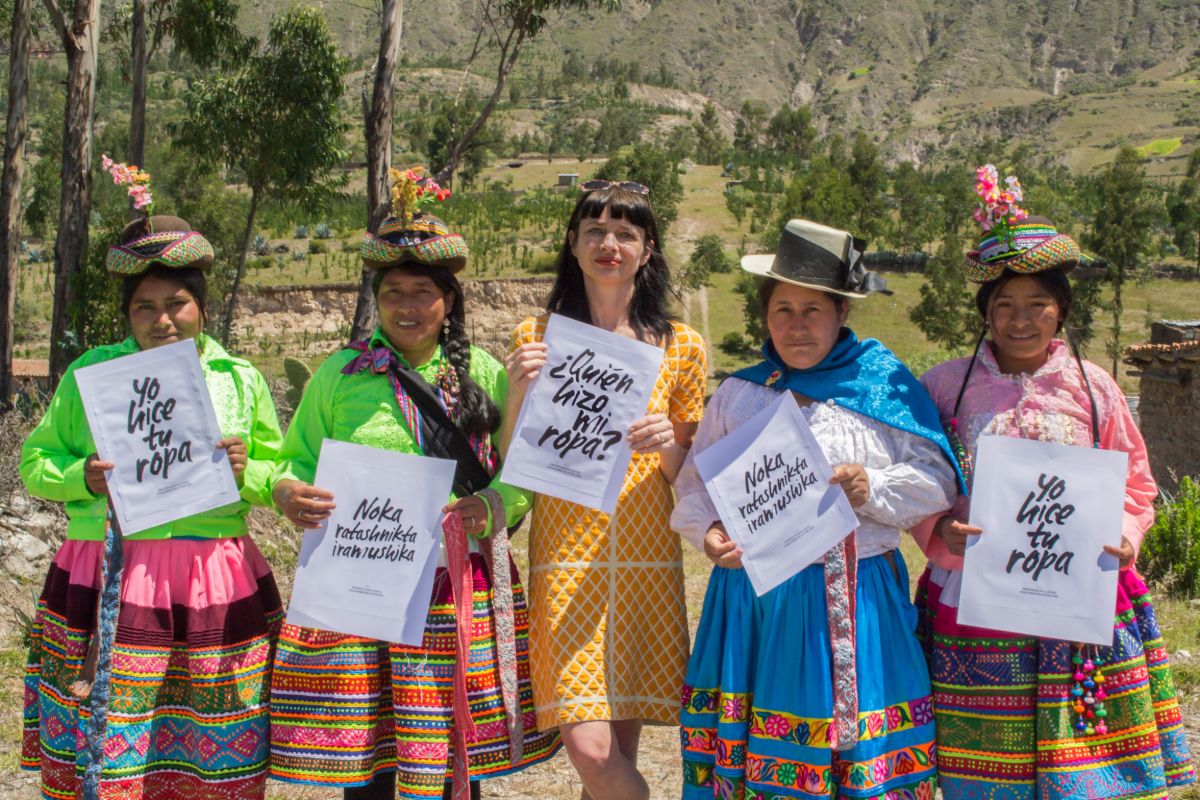
Fashion is talking about environmental and social responsibility more than ever before. So how is the industry progressing to avoid climate crises and reach broader social imperatives?
“To achieve net-zero emissions by no later than 2050, the industry needs to focus on raw materials given that half of the total greenhouse gas emissions, as well as over 90% of biodiversity loss and water stress, occur due to the extraction and transformation of resources. Currently, less than 1% of fibres used to make garments recycle into new clothing. Only a quarter of brands explain how they’re working to develop textile-to-textile recycling solutions. Considering the urgency of the plastic pollution issue, we would hope to see real action in this area from the industry.
Only a quarter of brands and retailers have targets for reducing the use of textiles made from virgin fossil fuels, and just 21% of brands report the steps they have taken to minimize the impacts of microfibre shedding. We need brands and retailers to reduce impacts across all fibre types, publish Scope 3 emissions, and track them transparently to achieve net-zero.
When brands fail, there should be meaningful sanctions and reparations. Many brands will not change unless forced to do so by law. For instance, our research has shown that even though the UK’s Modern Slavery Act has not been impactful in rooting out forced labour from clothing supply chains, the legislation has meant that companies who disclosed virtually nothing about their efforts on responsible sourcing now publish some information which their stakeholders can scrutinize. We need to see more willingness from our legislators to take bold and unpopular action.”
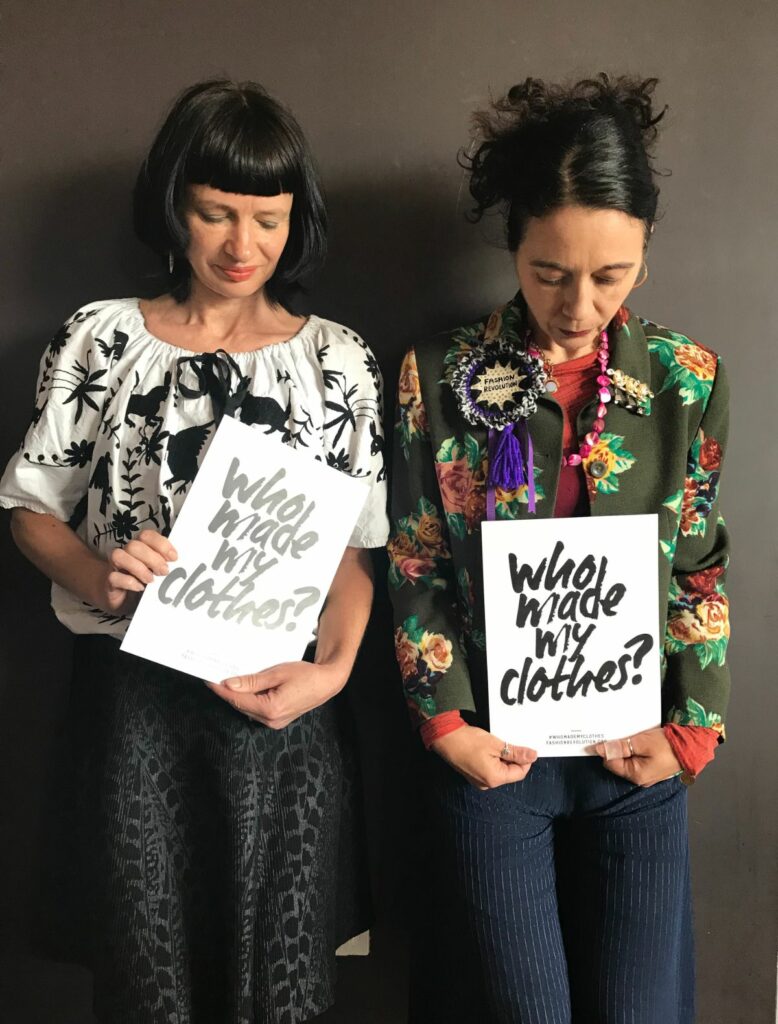

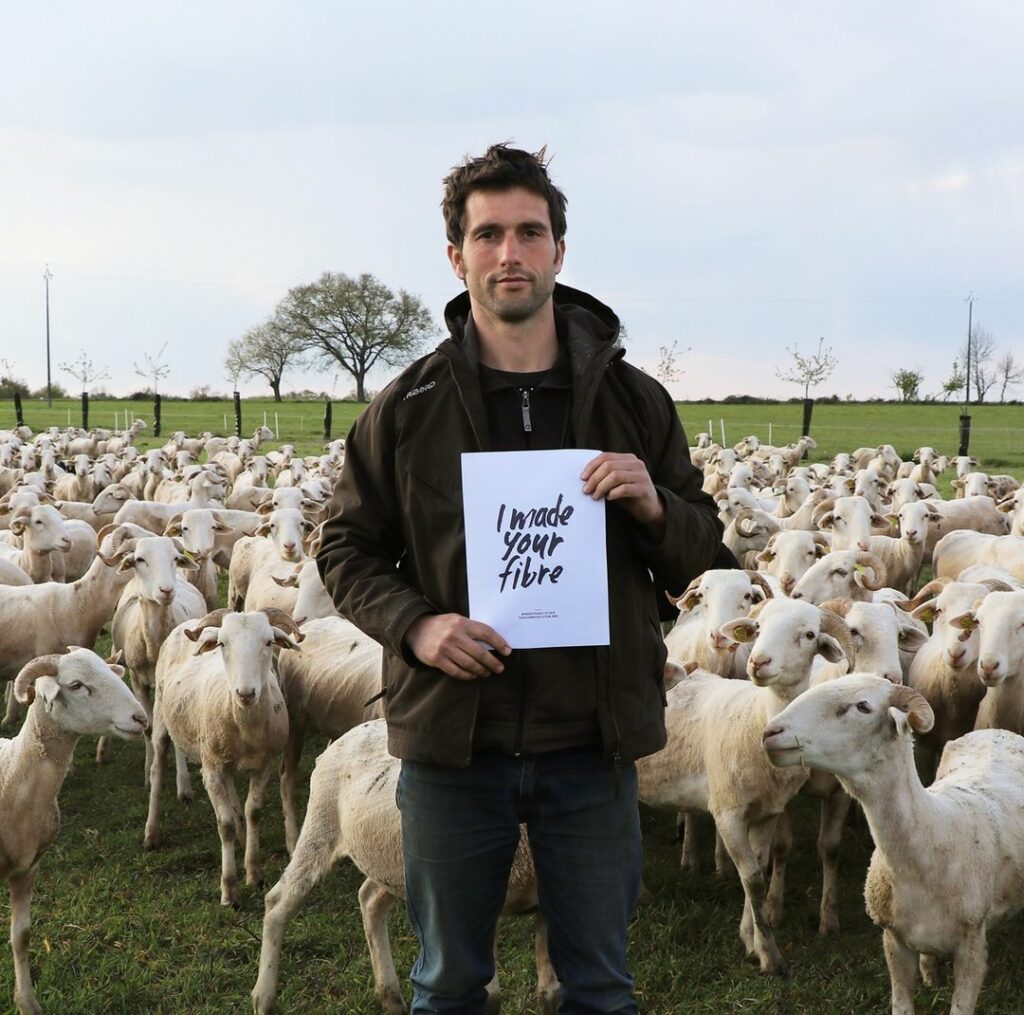
At each step of the fast-fashion supply chain, negative aspects have created a global environmental justice dilemma, an environmental injustice within a racialized context. The disproportionate burden of environmental health hazards experienced by those who produce and dispose of our clothing, including BIPOC, cannot be ignored.
“The Year 2021, Fashion Revolution has been focusing on how human rights and the rights of nature are interconnected and interdependent. Our right to a healthy environment depends on the health of our planet, but far too often, human and environmental prosperity is isolated and disconnected from each other. We cannot continue to dump our textile waste on the shoulders of countries we have culturally depleted, nor can we continue to allow big business to profit while supply chain workers struggle to live in dignity. We need industry and policymakers to take concrete steps to prevent fashion from sidestepping its responsibility for human and environmental impacts, wherever they happen in the world.
Low-income countries experience some of the most severe climate impacts. They have the least capacity to adapt and recover, forcing people to migrate from land that can no longer provide them with a living and making them open to exploitation, trafficking and modern slavery. Before the commencement of COP26, Fashion Revolution called upon policymakers to recognize the link between climate-induced migration and modern slavery, as set out in a Joint Civil Society letter to Delegate President The Rt Hon Alok Sharma MP. We urge policymakers to include it in climate targets and create a provision in the Green Climate Fund for migration and modern slavery-related responses. It is only by holding those brands who are destroying the environment accountable that we can uphold human rights for the most vulnerable sections of society.”
There is a green gender gap in being environmentally conscious; why is the burden of saving the planet placed on Women?
“The eco gender gap is a reflection of so many of the injustices we find in our society which are intrinsically linked to gender norms, from politics to pay. Society expects women to take on the responsibility for making their homes and families more sustainable, particularly as most women do the majority of cooking and shopping (although in my house, my husband does all the grocery shopping and cooks all the meals). Numerous studies have shown that men are less willing than women to adopt a sustainable lifestyle. And while we expect women to save the planet by adopting more responsible lifestyles, the men are, in the majority, the industry leaders and policymakers. Last week, the BBC asked me why fashion wasn’t a topic of discussion at COP26, and I suggested it was perhaps because men set the agenda. It is everyone’s responsibility to protect the planet, but this will only happen when we see a more gender-balanced world.”
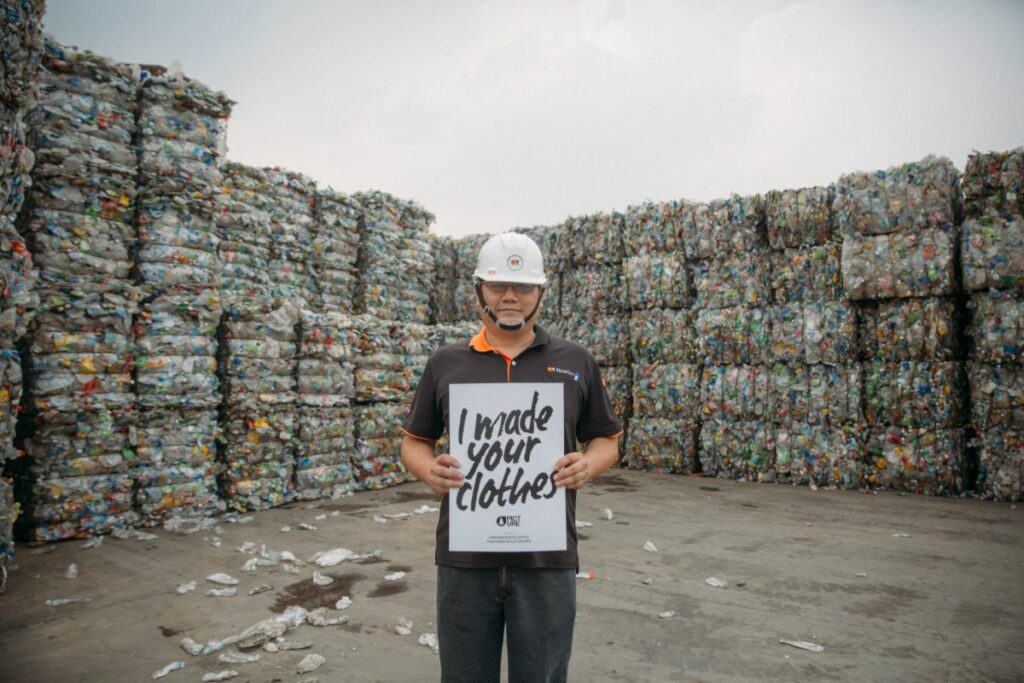
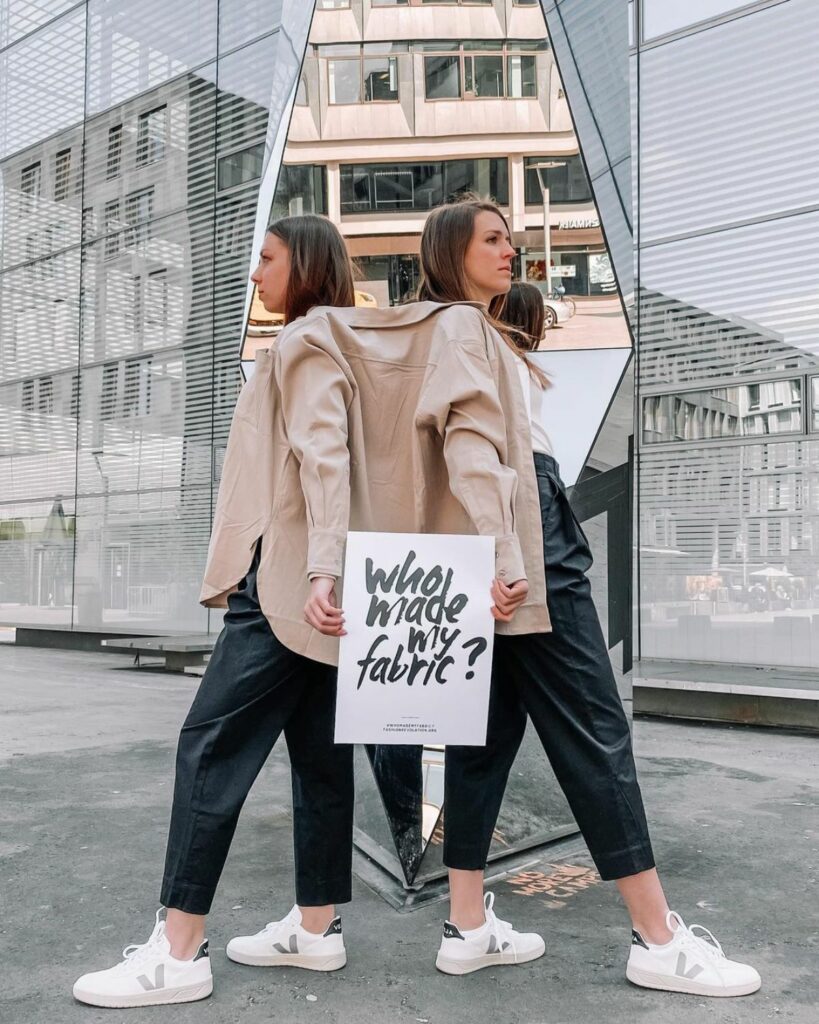
A singular perspective often dominates the current sustainability narratives. Despite the valid and valuable view brought to light, conversations dominated by a single view hinder us from moving forward. It is urgent to give way to the interplay of diverse narratives for different actors to offer new ways to move forward at this critical juncture.
“At Fashion Revolution, we have been working hard to bring nuance into all conversations around fashion and sustainability. For instance, we always try to talk about fashion as a whole rather than just fast fashion as we know that fashion’s abuses don’t always correlate to the price point. The price difference is often just the brands’ markup. Many mid-price and mass-produced luxury brands produce on the same production lines in countries like Bangladesh with comparable social and environmental consequences within the supply chain, albeit in smaller quantities. I have seen firsthand the impact in the tanneries of Bangladesh while processing hides are for the Italian leather industry. We also want to avoid shaming people who don’t have the budget to make better choices – all of us can influence the industry by using our voice and power to bring about change wherever we shop.
We believe that the fashion industry’s problems are more extensive than any single company’s actions and bigger than just the fast fashion sector. It’s a systemic failure, and this is why we are actively working to avoid binary arguments and bring a higher degree of nuance to the sustainability conversation.
As climate change threats become ever more urgent, most of us have experienced eco-guilt at some point as we make one or two bad choices on the way. Everyone is preaching the importance of sustainability, but we rarely discuss how difficult it is to live sustainably. Instead of obsessing over every single lifestyle choice, embrace the feeling and move forward to make a change.
“Eco-anxiety is both an emotional and psychological response to the environmental crisis facing our world. In 2018, the Climate Change in the American Mind study found that over half of Americans felt helpless in the face of the climate crisis its impact on their homes and families. For many people, these feelings are likely to have escalated following the extensive media coverage around COP26. Action is an effective remedy for climate anxiety, which is why we have focused on accessible tools and actions at Fashion Revolution. Our mantra is Be Curious, Find Out, Do Something About It! All of us can use our voice and power to bring about change, wherever we like to shop and our budget by asking questions like #whomademyclothes? #whomademyfabric? And #whatsinmyclothes? We can choose our materials wisely, buy clothes we love that we will wear for years, learn how to care for our clothes to make them last longer, and wash on short cycles and low temperatures to reduce microfibre shedding. Ultimately, to change the fashion system, we must change the culture it thrives on, shifting the way we think about and engage with their clothes, changing mindsets, and creating new cultural narratives.”
It is not a single person’s responsibility to make sure fashion is sustainable because clothing is a chain product. Achieving a sustainable global garment industry requires all stakeholders’ collective effort and commitment, including brands and retailers, textile manufacturers, the government, and the consumers.
The industry is in a powerful position to make changes from the inside, and big brands have the resources, marketing power and moral responsibility to change. We recognize that systemic change will not happen overnight. Fashion companies – whether large or small – can and must take urgent action to be more transparent, fairly pay and protect the people in their supply chains, and sustain our living planet.
However, we cannot expect the market to address the climate crisis on its own. At the international, national and local levels, our governments have the duty to protect human rights and the environment. They can and must do more to ensure this happens and play a more active role in regulating the industry. For governments to improve human rights, social impacts and environmental sustainability in the fashion industry, they must rewrite the rules of the economy, so that shareholder profit is no longer prioritized above the protection of our ecosystems and the health and wellbeing of our communities. Ultimately, we need our policymakers to help ensure that only responsible clothing is profitable.
And we need greater transparency because when people are equipped with more — better quality, credible, comparable —information about the human and environmental impacts of the clothes they buy, they can make more informed choices.

What’s the smallest change an individual could make to become more eco-conscious?
“Switch to a cooler, shorter cycle next time you do the laundry.”












